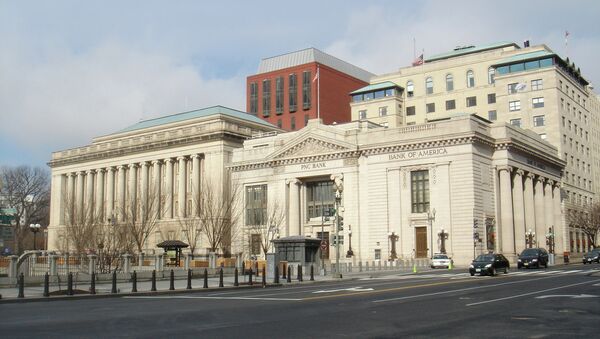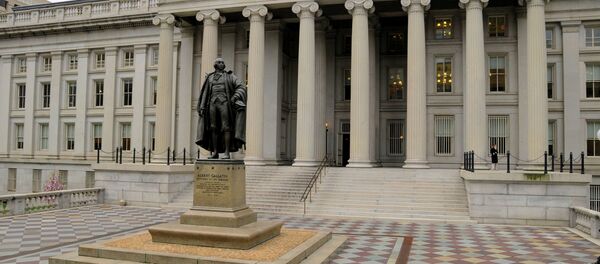WASHINGTON (Sputnik) — The budget deal raises the US debt ceiling — the amount of money the US government is permitted to borrow — from its current level of $18.15 trillion to $19.65 trillion.
By the time Obama leaves office in January 2017, the national debt is projected to reach $20 trillion.
That figure is almost double the $10.6 trillion in 2009 — a record at the time — that Obama inherited from his predecessor, President George W. Bush.
However, the conservative Tea Party movement, which started in 2009, has exercised increasing popularity in Republican Party primaries to select candidates for Congress.
As a result, the Tea Party movement has moved the Republicans in the House of Representatives to take a much stronger stand against raising the national debt limit and fiscal accountability.
The national debt is the gross outstanding federal debt that has been issued by the US Department of the Treasury since 1790. It does not include debt incurred by the 50 US states or local government debt.
The national debt also includes the enormous sums of interest that have to be paid every year on the debt’s principal. But it does not include the separate unfunded liabilities of the US federal government entitlement programs such as Social Security and the health care program Medicare.
On June 30, $6.2 trillion of the national debt was owned by foreign investors. China held $1.3 trillion and Japan held $1.2 trillion of the US national debt.
Historically, the national debt peaked at 115 percent of Gross Domestic Product (GDP) at the end of World War II in 1945.
Over the following 35 years, the national debt steadily fell or remained stable, and stayed below 40 percent of GDP until the financial crisis of September 2008.
After the 2008 crisis, and throughout Obama’s presidency, the national debt has soared and remained between 70 and 80 percent of GDP since 2012.
From October to December 2015, the US Treasury expects to issue $344 billion in net marketable debt.
The borrowing estimate is $74 billion higher than what was announced by the Treasury in August 2015.






